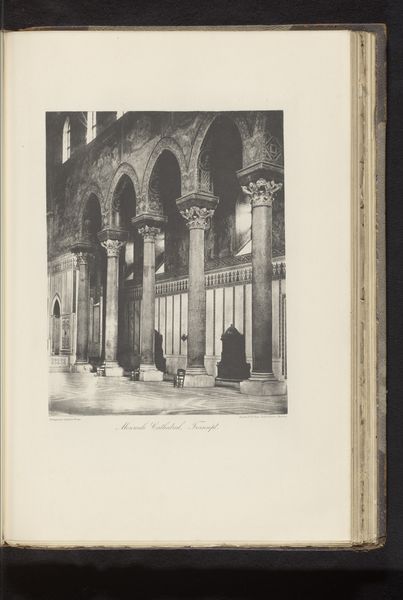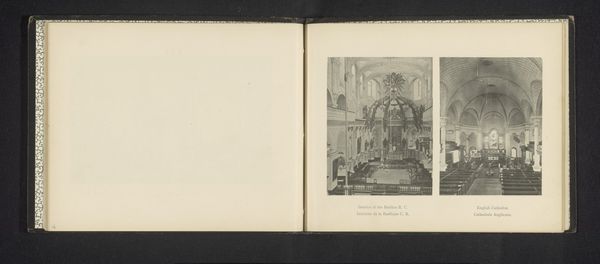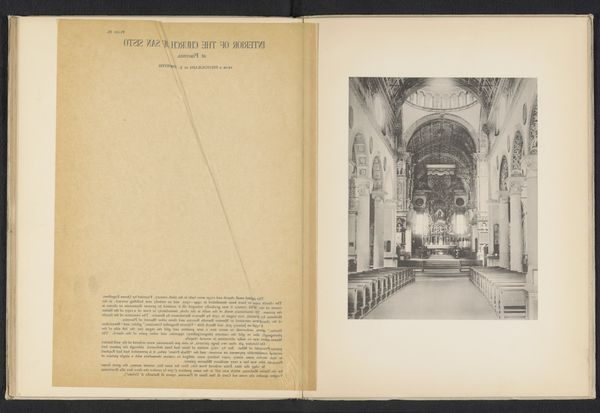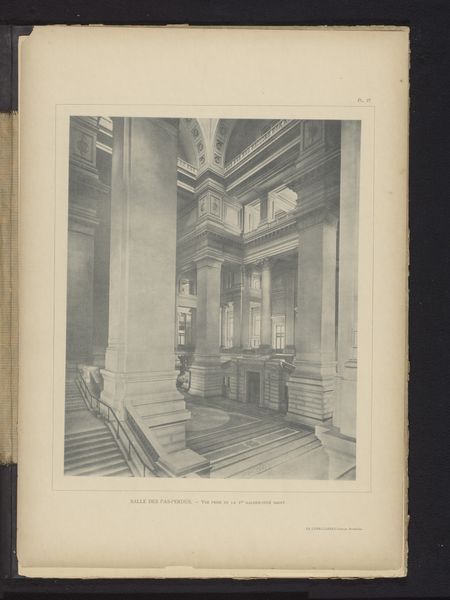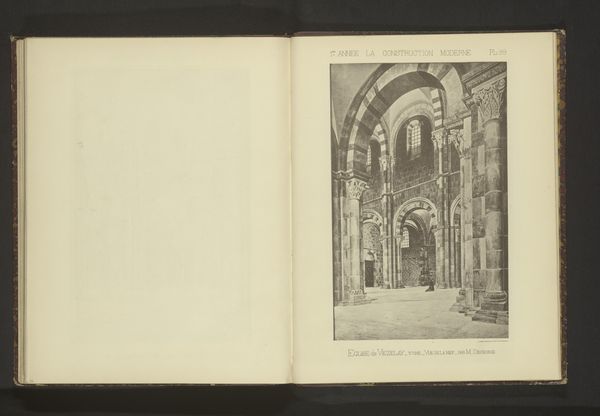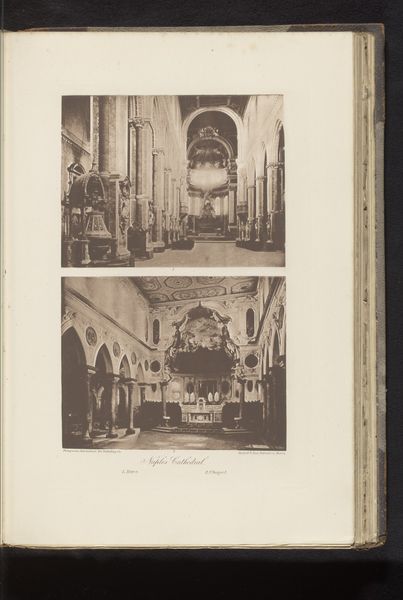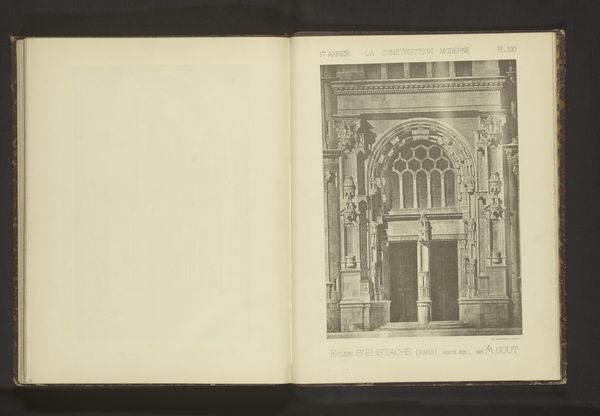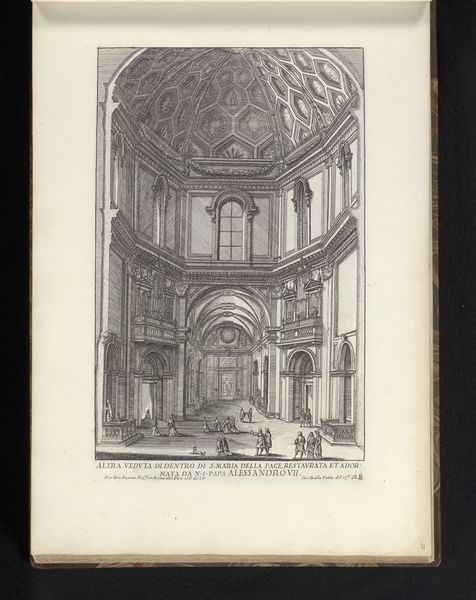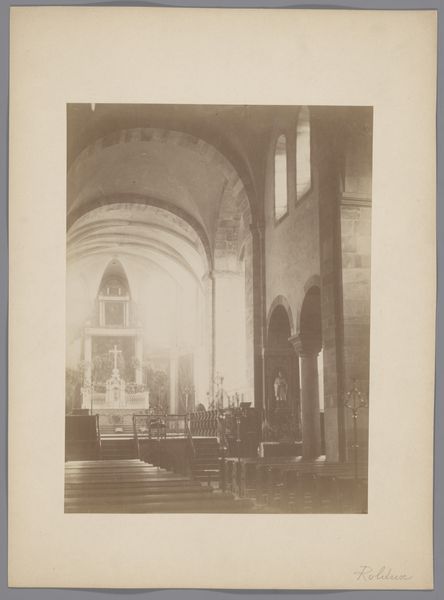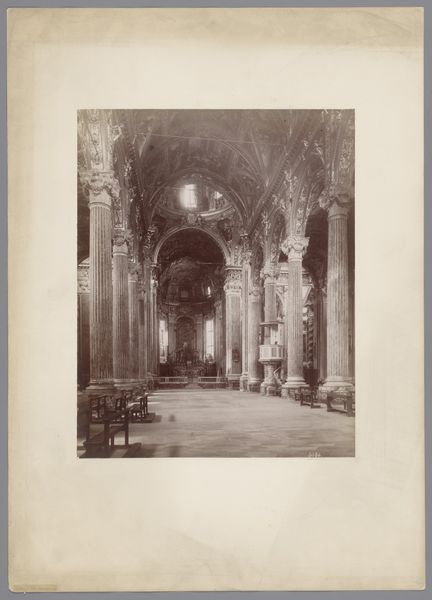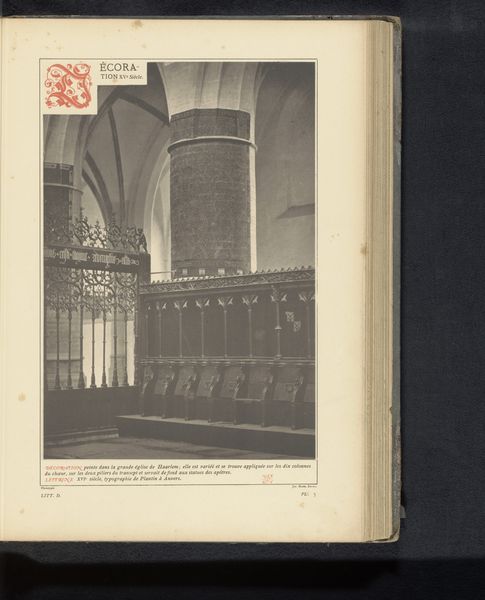
drawing, print, paper, photography, architecture
#
drawing
# print
#
landscape
#
perspective
#
paper
#
photography
#
geometric
#
architecture
#
realism
Dimensions: height 293 mm, width 199 mm
Copyright: Rijks Museum: Open Domain
Editor: So, here we have a photographic print titled "Interieur van de kathedraal van Florence," dating from before 1886. It captures the interior of the Florence Cathedral, and there's something really stark about the geometric quality in this black and white photograph. What catches your eye in this particular image? Curator: What immediately strikes me is the process itself, the material conditions that enabled the capture of such a scene at that specific moment. Think about the limitations of early photographic technology. Long exposure times would have necessitated a deserted cathedral, devoid of worshippers or laborers. How did the photographer negotiate access, lighting, and stillness to create this seemingly objective record? Editor: That’s interesting, I hadn’t thought about the technical challenges so much. So you are less focused on the artistic elements of perspective and light than how it was actually made. Curator: Exactly. Consider also the social implications. Photography was still developing as both art and a tool. Who was the intended audience for this image? Was it commissioned? How might the proliferation of such images have impacted the role of painting or drawing in architectural documentation? The materiality of the print itself--the paper, the ink, the printing process--all speaks to a specific moment in the history of image production. It becomes less about pure representation and more about social practices and labor involved. Editor: So it becomes more than a picture of a cathedral? More a record of industry. Curator: Precisely! This photograph offers a tangible link to understand the consumption and dissemination of images at that time and within its societal power structures. Editor: Wow, I never thought of it that way. Looking at it from a production angle really changes how you interpret the photograph. It brings it to life. Thanks! Curator: My pleasure. Considering artwork through the lens of material conditions really opens up exciting avenues of exploration and gives historical images a completely modern perspective.
Comments
No comments
Be the first to comment and join the conversation on the ultimate creative platform.
